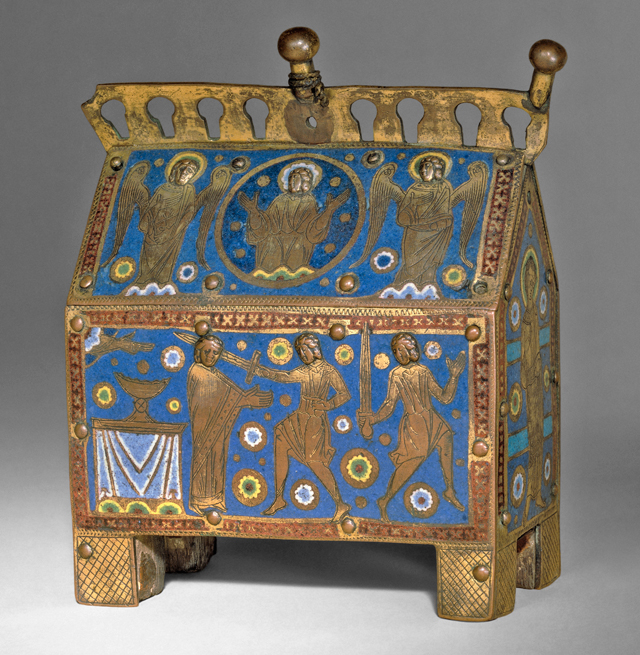Reliquary Chasse with Scenes of the Martyrdom of Thomas Becket
The British Museum, London
Copyright © The Trustees of the British Museum

 Select the image to zoom
Select the image to zoom
After Becket's canonization in 1173, Canterbury was transformed into a center for pilgrims, and Becket became a widely admired and venerated figure. The pilgrimage that Chaucer's characters make in his Canterbury Tales shows that some two hundred years later the cult of Thomas Becket and the draw of Canterbury were still thriving. Scenes of Becket's martyrdom were a common subject in Limoges enamelwork during the first half of the thirteenth century; some fifty chasses or chasse fragments depicting the saint have survived. With one exception (owned by the Society of Antiquaries, London), only two or three attackers are depicted in the murder scene.
A very similar chasse is in the Musée du Louvre, Paris (OA 7745). The front panels of both show the scene of Becket's murder: as he stands by an altar his neck is struck by the sword of one of two knights who advance upon him. In the British Museum chasse Becket stands upright, facing the two knights, with his arms outstretched, as if trying to reason with his attackers; in the Louvre example Becket is facing the altar and he falls onto it with his head turned to the right, looking at the viewer. The front roof sections of both chasses show the saint rising to heaven as he emerges from a cloud, flanked by angels.




